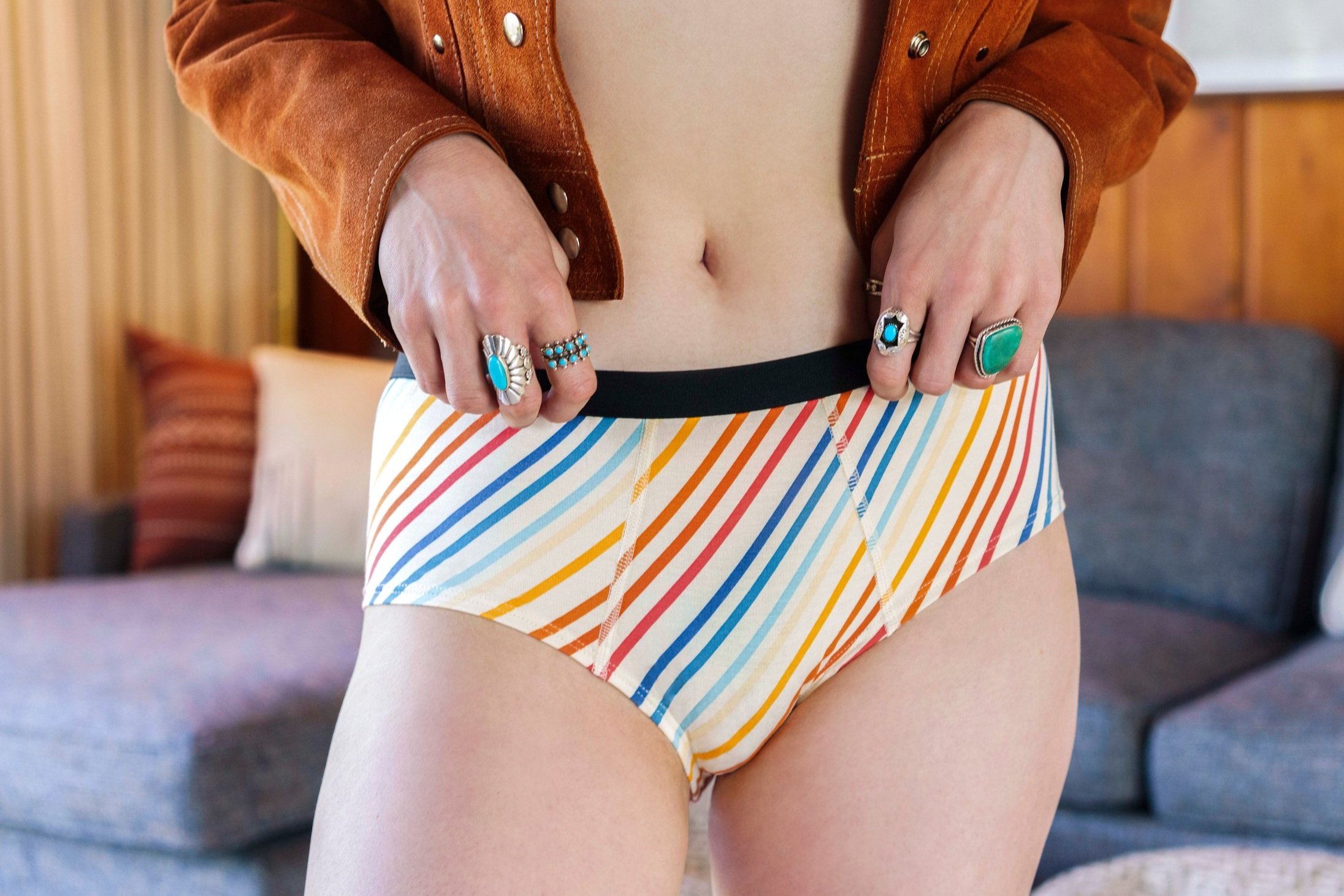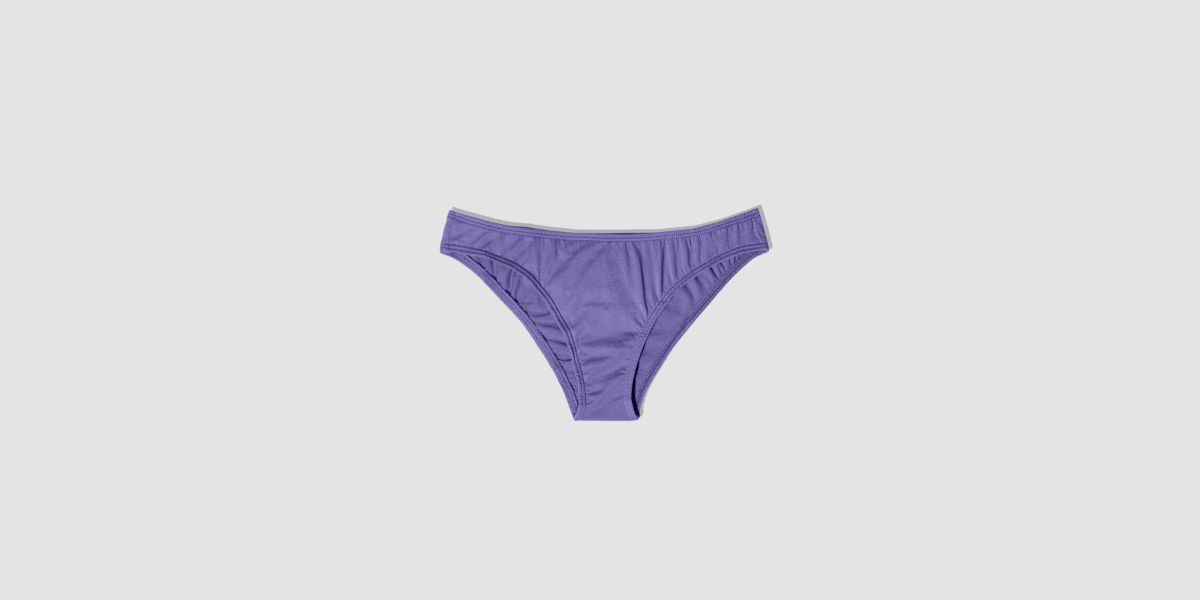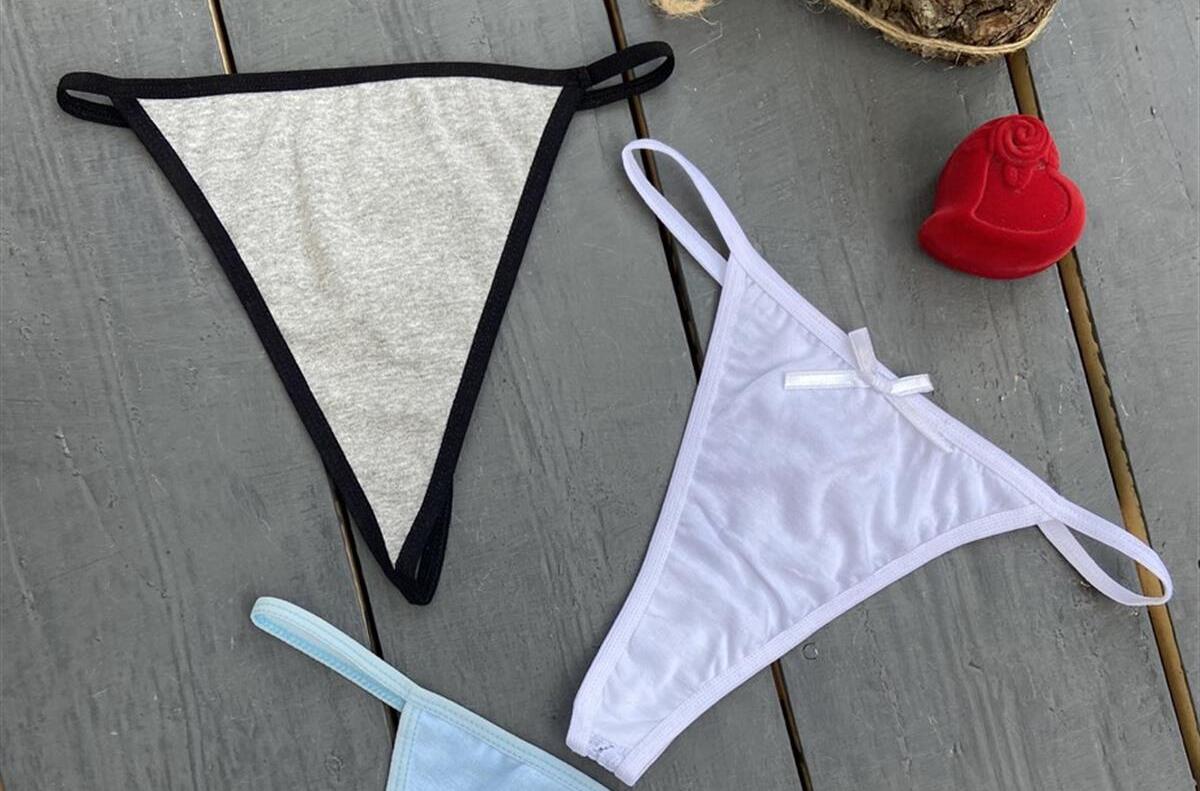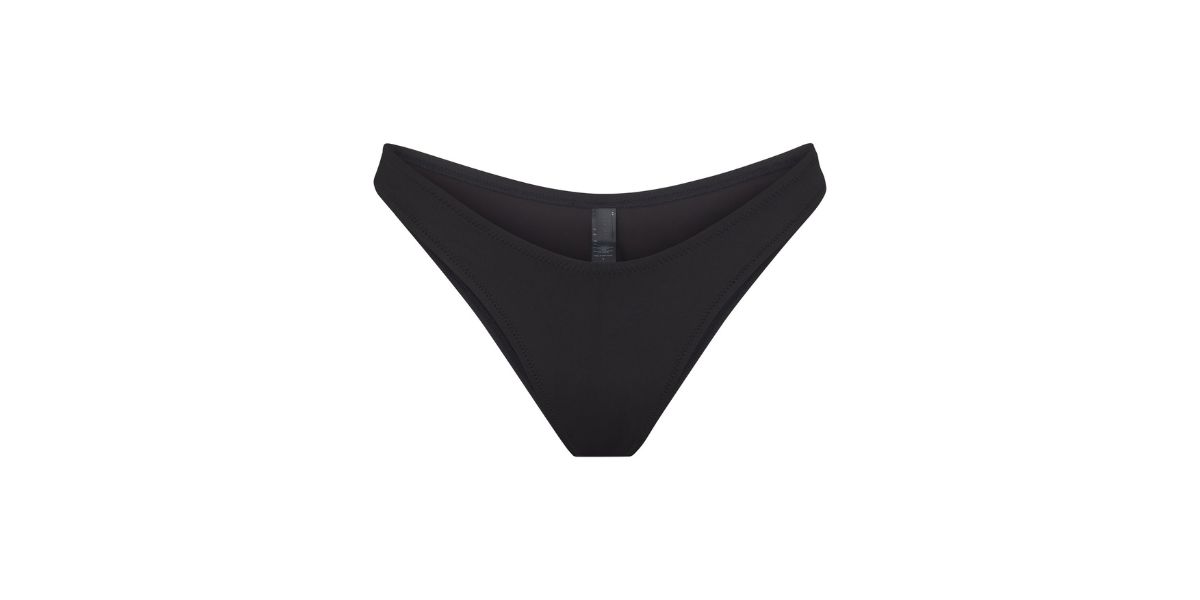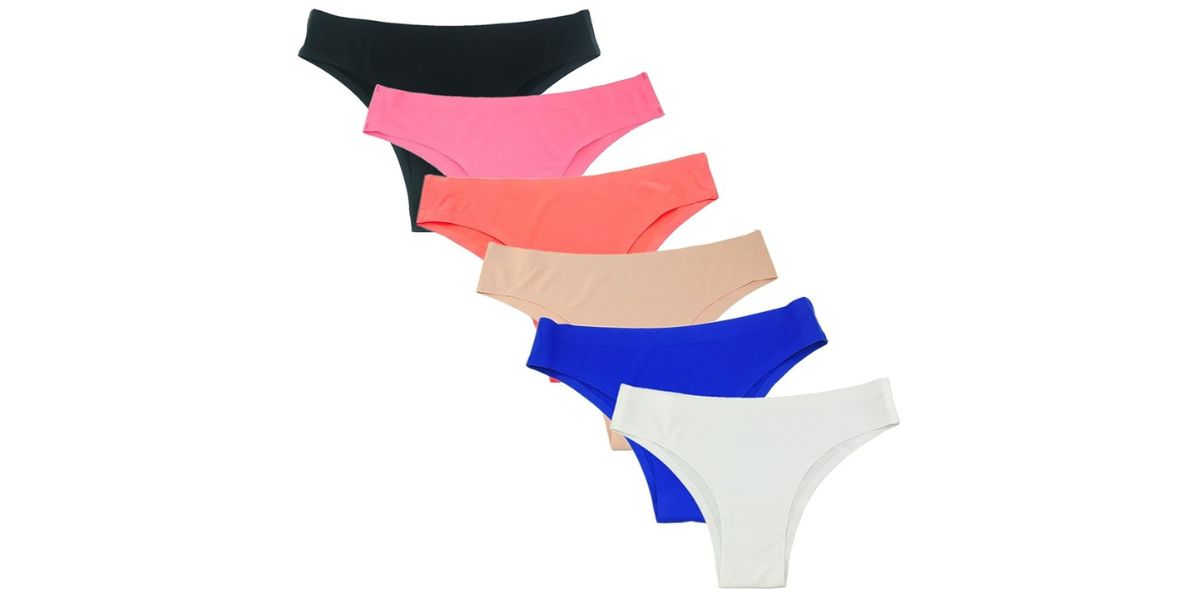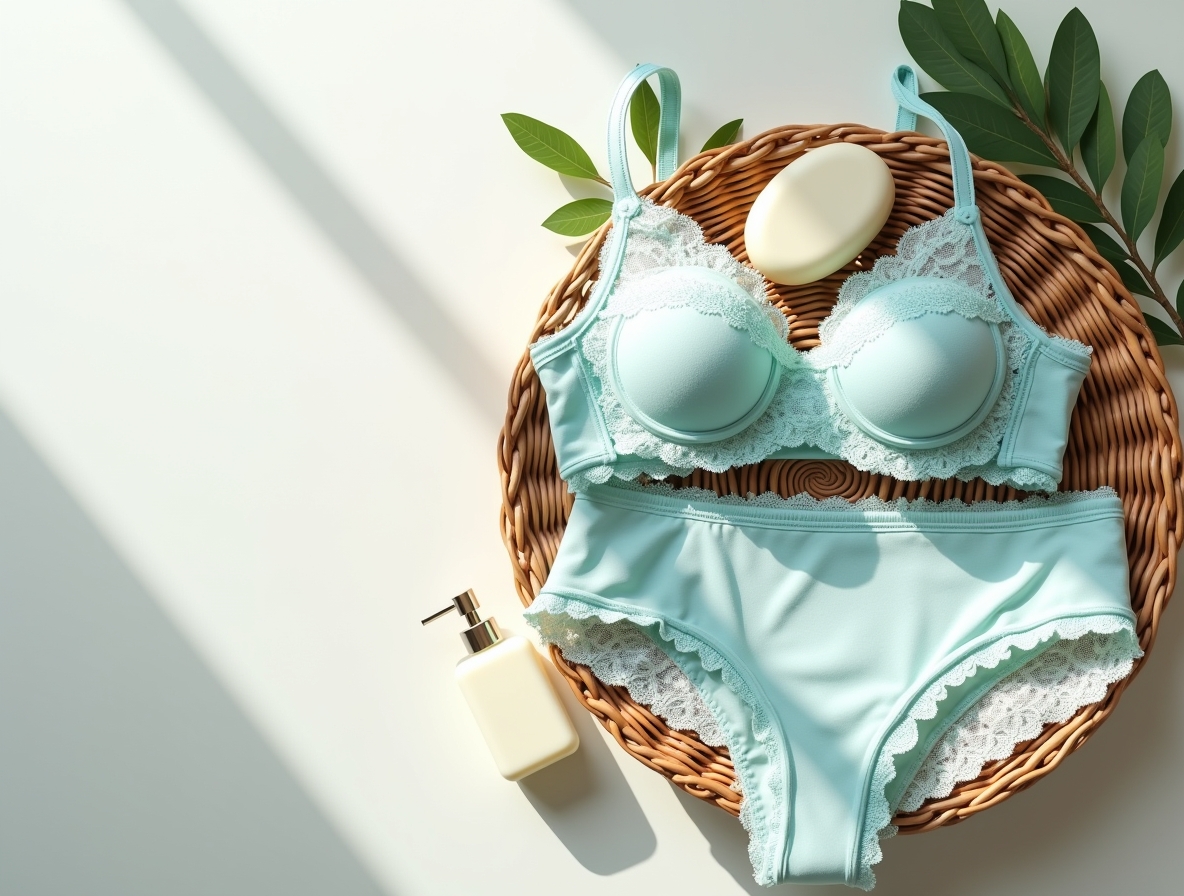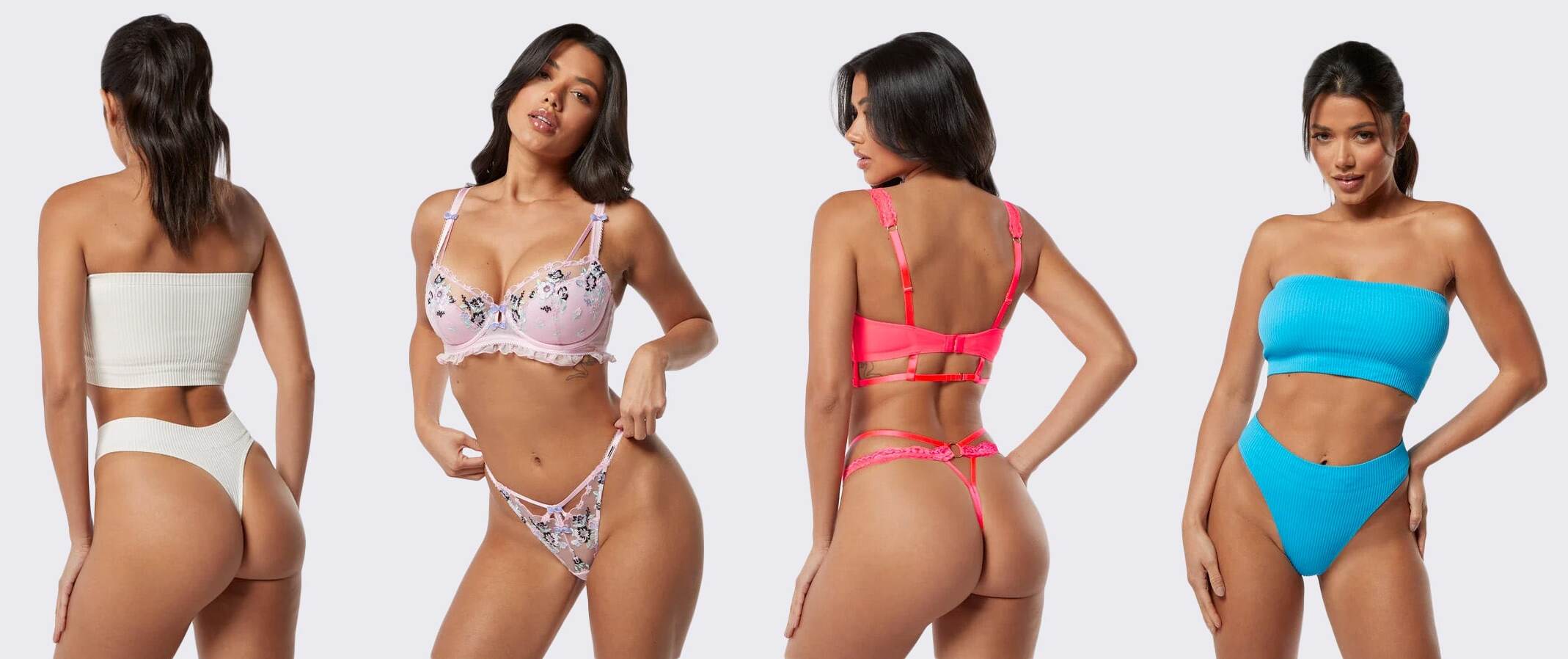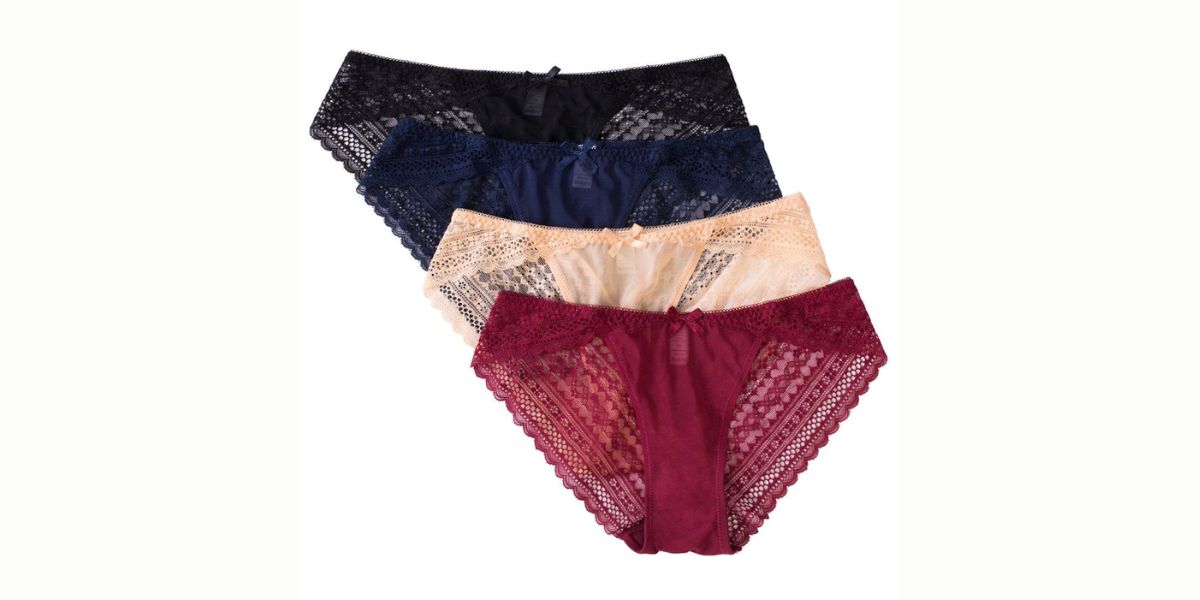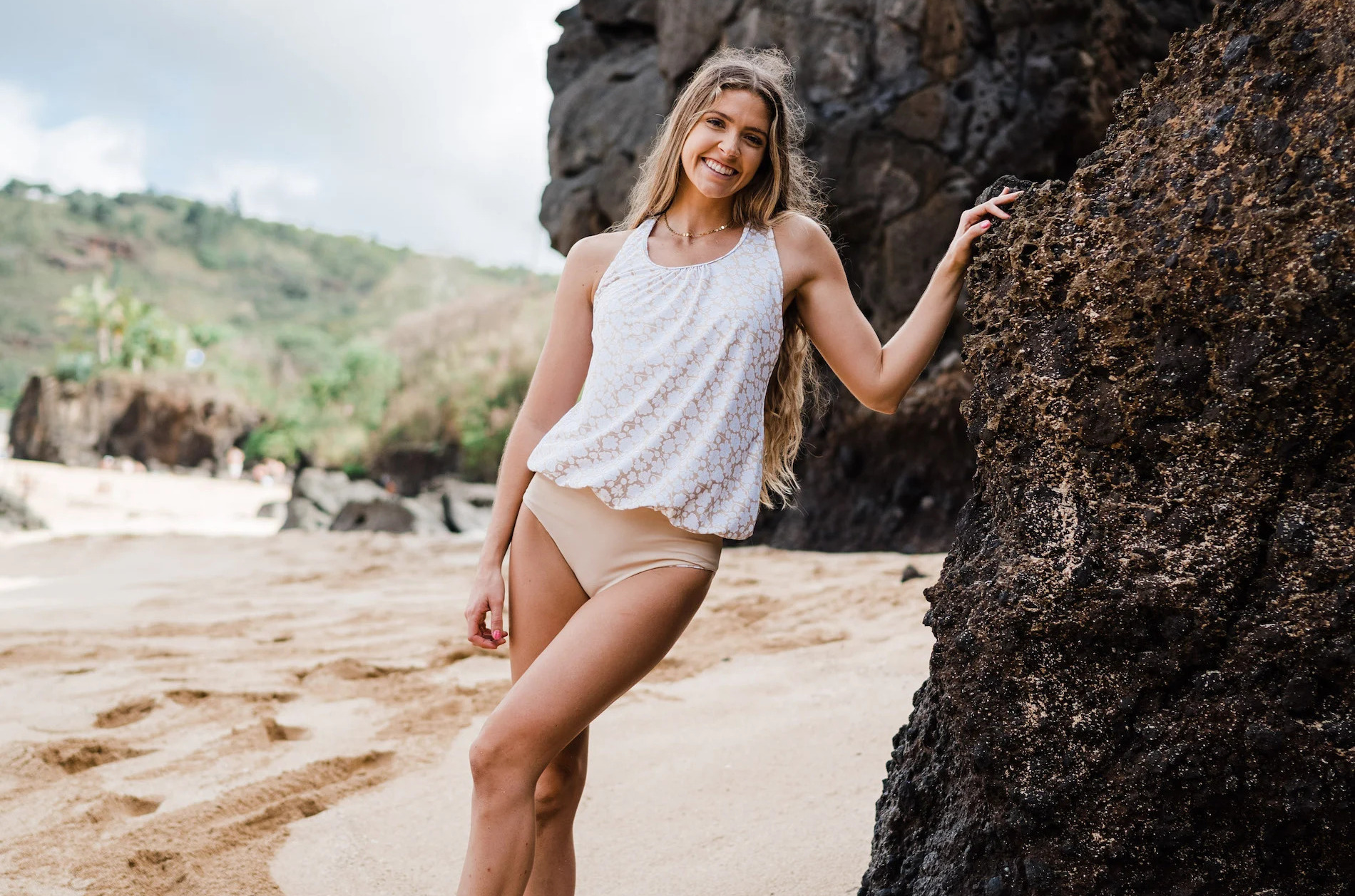Home>Latest Posts>What Is The Difference Between A Tanga And A Thong?
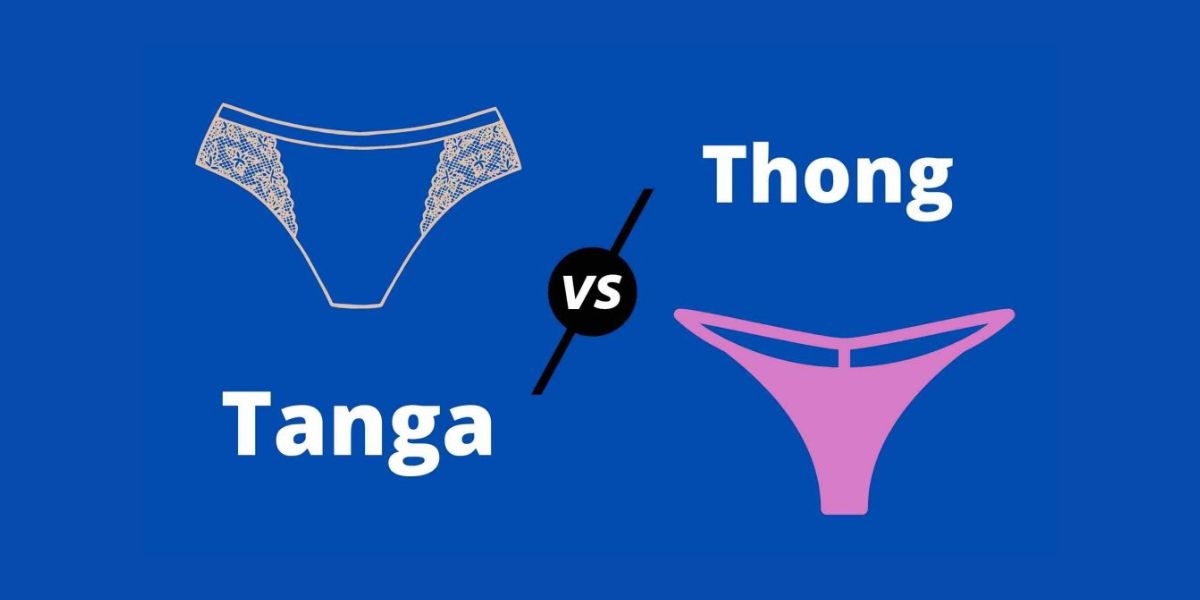

Latest Posts
What Is The Difference Between A Tanga And A Thong?
Modified: August 2, 2023
Discover the key distinctions between a tanga and a thong. Learn about the various types of underwear in our helpful guide.
(Many of the links in this article redirect to a specific reviewed product. Your purchase of these products through affiliate links helps to generate commission for Under-tec.com, at no extra cost. Learn more)
Table of Contents
Introduction
When it comes to choosing the perfect underwear, people have a myriad of options to select from. One of the most enduring debates in the world of lingerie is the difference between a tanga and a thong. While these two styles may seem similar at first glance, there are distinct features and characteristics that set them apart.
A tanga and a thong are both types of underwear that offer minimal coverage, making them popular choices for individuals looking to avoid visible panty lines and create a seamless look under clothing. However, there are key differences in terms of design, fabric, coverage, and cultural use that make each style unique.
In this article, we will delve into the details of what defines a tanga and a thong, explore the various factors that differentiate them, and consider the practicality, comfort, and style implications of each.
Whether you’re looking to learn more about these styles of underwear or trying to decide which one is right for you, this guide will provide you with valuable insights and help you make an informed choice that best suits your preferences and needs.
Definition of a Tanga
A tanga is a style of underwear that offers moderate coverage while still maintaining a sexy and alluring look. It is often referred to as a hybrid between a bikini and a thong.
The defining characteristic of a tanga is its narrow waistband that sits low on the hips, providing a flattering and comfortable fit. This style typically features wider side panels compared to a thong, offering more coverage on the back and sides. The narrower back panel exposes a small portion of the buttocks, creating a seductive and cheeky appearance.
Tangas are available in a variety of fabrics, including cotton, satin, lace, and microfiber. This ensures that wearers have choices based on their personal preferences and desired level of comfort. Some tangas also come with additional decorative elements such as bows, ribbons, or intricate lace patterns, adding a touch of femininity and style.
While tangas are commonly associated with lingerie, they can also be found in swimwear collections. Many swimsuit designers incorporate tanga bottoms into their bikini sets, giving wearers the option to showcase their curves while still enjoying a moderate amount of coverage.
With their versatility and alluring design, tangas are popular choices for individuals who want to feel sexy and confident while maintaining a level of modesty. The combination of comfort, coverage, and sex appeal makes tangas a suitable option for different body types and occasions.
Definition of a Thong
A thong is a style of underwear that is known for its minimal coverage, often consisting of a narrow strip of fabric running between the buttocks.
The key feature of a thong is its thin waistband that sits low on the hips, providing a barely-there feeling. Unlike a tanga, which offers more coverage on the sides and back, a thong has narrower side panels and a significantly smaller back panel, resulting in a more revealing look. This design allows wearers to eliminate visible panty lines, making it a popular choice for tight-fitting clothing.
Thongs come in a variety of fabrics, including cotton, lace, satin, and microfiber. The choice of fabric depends on personal preference for comfort and style. Some thongs feature seamless designs, ensuring a smooth and invisible look under clothing, while others may have decorative elements like embellishments or intricate patterns to add a touch of glamour.
While thongs are primarily known as lingerie, they are also commonly worn as swim bottoms, particularly in beach or poolside settings. Many swimwear brands offer thong-style bikini bottoms, providing wearers with the option to showcase their curves and feel confident in a revealing yet fashionable way.
Thongs are popular among individuals who desire a streamlined and discreet underwear option. They offer the freedom to wear tight or sheer clothing without worry of visible panty lines. Furthermore, some people find the minimal coverage and cheeky design of thongs to be empowering and sexy, enhancing their confidence and body positivity.
It is worth noting that cultural perceptions and trends may influence the acceptance and popularity of thongs in different regions. While they are widely embraced in some societies, others may have more conservative views regarding their use. Ultimately, the decision to wear a thong comes down to personal choice and comfort, allowing individuals to express their unique style and preferences.
Fabric and Coverage
When it comes to fabric and coverage, both tangas and thongs offer minimal coverage, but there are variations in terms of materials used and the extent of skin exposure.
Tangas are available in a wide range of fabrics, including cotton, satin, lace, and microfiber. Cotton tangas are a popular choice for everyday wear due to their breathability and comfort. Satin and lace tangas, on the other hand, are often chosen for special occasions or to add a touch of luxury to lingerie collections. Microfiber tangas provide a smooth and seamless look under clothing and are favored for their moisture-wicking properties.
Regarding coverage, tangas offer more fabric on the sides and back compared to thongs. The wider side panels of a tanga provide additional coverage on the hips, while the back panel exposes a small portion of the buttocks, creating an enticing yet moderate look.
Thongs, on the other hand, come in a variety of fabrics such as cotton, lace, satin, and microfiber. The choice of fabric depends on individual preferences and desired comfort level. Thongs are designed to provide minimal coverage, with a narrow strip of fabric running between the buttocks. This exposes most of the buttocks and creates a more daring and revealing look.
It is worth noting that the coverage of both tangas and thongs can vary among different brands and styles. Some may offer slightly more fabric in the back or have adjustable side straps for a customizable fit. Ultimately, the choice between a tanga and a thong in terms of fabric and coverage comes down to personal preference, comfort, and the desired level of sensuality.
Waistband Style
The waistband style is another factor that sets tangas and thongs apart. While both styles feature low-rise waistbands, there are notable differences in their designs.
A tanga typically has a wider waistband that sits low on the hips. This wider band provides added support and a secure fit, ensuring the tanga stays in place throughout the day. The width of the waistband can vary depending on the brand and style, with some tangas featuring wider, more substantial bands for added comfort.
On the other hand, thongs are known for their thin waistbands. The narrowness of the waistband allows for a more seamless look under clothing and adds to the minimalistic aesthetic of the style. This thin band sits low on the hips, accentuating the natural curvature of the body.
Both tangas and thongs may have elasticized waistbands for a flexible and snug fit. Some styles may also feature decorative elements such as bows, ribbons, or branded tags on the waistband, adding a touch of femininity or luxury.
Ultimately, the choice between a tanga and a thong based on waistband style is a matter of personal preference. Some individuals may prefer the wider waistband of a tanga for added comfort and support, while others may opt for the slender and barely-there waistband of a thong for a more seamless and minimalistic look.
Rear Coverage
The level of rear coverage is a significant distinction between tangas and thongs. While both styles offer minimal coverage, there are noticeable differences in how much skin is exposed.
Tangas provide more coverage on the back compared to thongs. The back panel of a tanga is typically wider, covering a larger portion of the buttocks. This additional coverage ensures a modest yet alluring look, making tangas suitable for individuals who prefer a balance of sensuality and comfort. The amount of coverage can vary among different brands and styles, with some tangas offering slightly more fabric in the back for those who prefer a more conservative look.
Thongs, on the other hand, have a narrower back panel that exposes a significant portion of the buttocks. This design creates a more adventurous and provocative look, making thongs a popular choice for those seeking a bold and confident style. The thin strip of fabric running between the buttocks ensures minimum visibility under clothing, eliminating panty lines and allowing for unrestricted movement.
It’s important to note that there can be variations in the amount of rear coverage within each style. Some tangas may have a narrower back panel, resembling the rear coverage of a thong, while some thongs may offer a slightly wider back panel for those who desire a bit more coverage. Ultimately, the choice between a tanga and a thong in terms of rear coverage comes down to personal preference, comfort, and the desired level of daringness.
Usage and Cultural Differences
When it comes to the usage and cultural differences of tangas and thongs, it’s important to consider the varying preferences and societal norms that influence their popularity in different regions and cultures.
Tangas are widely worn by individuals of all genders around the world. They are often favored for everyday wear due to their comfortable and flattering fit. Tangas provide a balance between coverage and sensuality, making them suitable for various body types and personal style preferences. They are commonly embraced as a practical underwear choice, offering minimal visibility under clothing, especially when it comes to avoiding visible panty lines.
On the other hand, thongs often have a more provocative and daring connotation. They are popular among individuals who want to embrace their confidence and sexuality. Thongs are commonly associated with lingerie and are worn as a way to enhance intimacy and add a sense of allure to personal relationships. While they are widely accepted and embraced in some societies, others may have more conservative views regarding their use.
Cultural attitudes and preferences can shape the popularity and acceptance of thongs and tangas. For example, in some countries, such as Brazil and Colombia, thongs are widely worn as swimwear bottoms and are considered a normal and fashionable choice for beachwear. In contrast, in more conservative cultures, wearing thongs as underwear might be less common or even discouraged.
It’s important to respect and understand the cultural differences regarding underwear preferences and norms. Ultimately, the choice between a tanga and a thong in terms of usage and cultural differences is a personal one. Individuals should feel comfortable and confident in selecting the style that aligns with their personal beliefs, cultural norms, and desired level of self-expression.
Comfort and Practicality
Comfort and practicality are essential factors to consider when choosing between a tanga and a thong. While both styles offer minimal coverage, there are key differences that can affect how comfortable and practical they are for everyday wear.
Tangas are known for their moderate coverage, which provides a balance between sexiness and comfort. The wider side panels and back panel of a tanga offer more fabric, ensuring a comfortable fit throughout the day. The additional coverage on the hips can prevent the underwear from digging into the skin or causing discomfort. Tangas made from breathable fabrics like cotton can enhance comfort, especially during warmer weather or high-energy activities.
Thongs, with their minimal coverage, can also offer a comfortable and practical option for many individuals. The narrow strip of fabric running between the buttocks eliminates the chance of visible panty lines and offers a sense of freedom and flexibility. Thongs made from soft and stretchy materials like microfiber or lace can provide a comfortable fit without sacrificing style or practicality.
When considering practicality, tangas are often chosen for their versatility. They can be worn with various types of clothing, including jeans, skirts, and dresses, without the worry of visible panty lines. Tangas also come in seamless designs, making them ideal for form-fitting outfits or occasions when a smooth appearance is desired.
Thongs, while offering similar benefits in terms of eliminating visible panty lines, may not be practical for certain activities that require more coverage or protection. For example, during intense physical activities or while wearing loose-fitting clothing, a tanga may offer more support and security. However, for individuals who are comfortable with the minimal coverage and enjoy the freedom of movement, thongs can still be a practical choice for everyday wear.
In the end, the comfort and practicality of both tangas and thongs depend on personal preference, body type, and the specific activities one engages in. It is crucial to prioritize comfort and choose a style that allows for a seamless and comfortable experience throughout the day.
Fashion and Style
When it comes to fashion and style, both tangas and thongs offer unique options for individuals to express their personal taste and preferences.
Tangas are often favored for their refined and sophisticated look. They are available in a variety of stylish designs, including lace patterns, intricate details, and decorative elements like bows or ribbons. Tangas can be worn as a fashionable and feminine alternative to traditional underwear, providing a touch of elegance and sophistication. They can also be matched with bras or lingerie sets, creating a coordinated and stylish ensemble.
Thongs, on the other hand, are known for their bold and provocative aesthetic. They are frequently associated with lingerie and intimate occasions where individuals want to enhance their confidence and allure. Thongs come in a wide array of sexy and glamorous designs, including lace, satin, and strappy styles. They are often chosen to create a seductive and tantalizing look, both for personal enjoyment and to surprise a partner.
Both tangas and thongs can be considered fashionable choices depending on the style, design, and fit that individuals prefer. They are available in various colors, prints, and fabrics, allowing wearers to find options that suit their personal style and complement their outerwear. Whether it’s a classic black lace tanga or a vibrant and playful thong, these styles offer versatility and the ability to make a fashion statement.
In terms of outerwear, tangas and thongs are designed to be discreet under clothing, giving wearers a seamless and smooth appearance. They are ideal choices for form-fitting outfits, skirts, and dresses where avoiding visible panty lines is essential. Additionally, thongs are also popular options for swimwear, especially in countries and cultures where minimal coverage is embraced on the beach or poolside.
When it comes to fashion and style, it’s important to prioritize personal comfort and confidence. Choosing between a tanga and a thong should be based on individual preferences and the desired fashion statement. Whether it’s adding a touch of sophistication with a tanga or embracing provocative allure with a thong, both styles offer opportunities for individuals to showcase their unique style and express their personality through their choice of underwear.
Conclusion
In conclusion, while tangas and thongs may seem similar at first glance, there are several key differences that set them apart. Tangas offer moderate coverage, with wider side panels and a slightly larger back panel, providing a balanced combination of comfort and sensuality. Thongs, on the other hand, offer minimal coverage with a narrower back panel, creating a daring and adventurous look.
Both tangas and thongs come in a variety of fabrics, from cotton to lace, allowing individuals to choose based on their desired level of comfort and style. They are also available in fashionable designs, with tangas often incorporating intricate details and thongs focusing on a bold and provocative aesthetic. The waistband style of tangas is typically wider for additional support, while thongs feature thin, barely-there bands for a seamless look.
When it comes to usage and cultural differences, tangas are widely accepted and worn by individuals across different cultures, making them a practical choice for everyday underwear. Thongs, with their more daring design, are often associated with lingerie and can vary in acceptance depending on cultural norms and personal preferences.
Comfort and practicality play significant roles in choosing between a tanga and a thong. Tangas provide a balance of coverage and comfort, making them versatile for various activities and outfits. Thongs, while offering minimal coverage, can be comfortable and practical for individuals who embrace their confidence and prioritize freedom of movement.
Ultimately, the choice between a tanga and a thong comes down to personal preference, comfort, and desired style. Whether it’s seeking a feminine and sophisticated look with a tanga or embracing daring boldness with a thong, both styles offer individuals the opportunity to express their personal taste, confidence, and sensuality through their choice of underwear.
